As a primary care paramedic, Emily Smith had delivered two babies before in the back of an ambulance but never as an Emergency Medical Call-Taker (EMCT).
In early March, on her second day as a BC Emergency Health Services EMCT student, Emily took a 9-1-1 call for an ambulance from Altona, a remote community in northern B.C.
“They were at home, in labour just under an hour, when they called us. The baby was very fast,” remembers Emily, who was in the Vancouver Island Dispatch Operations Centre in Victoria.
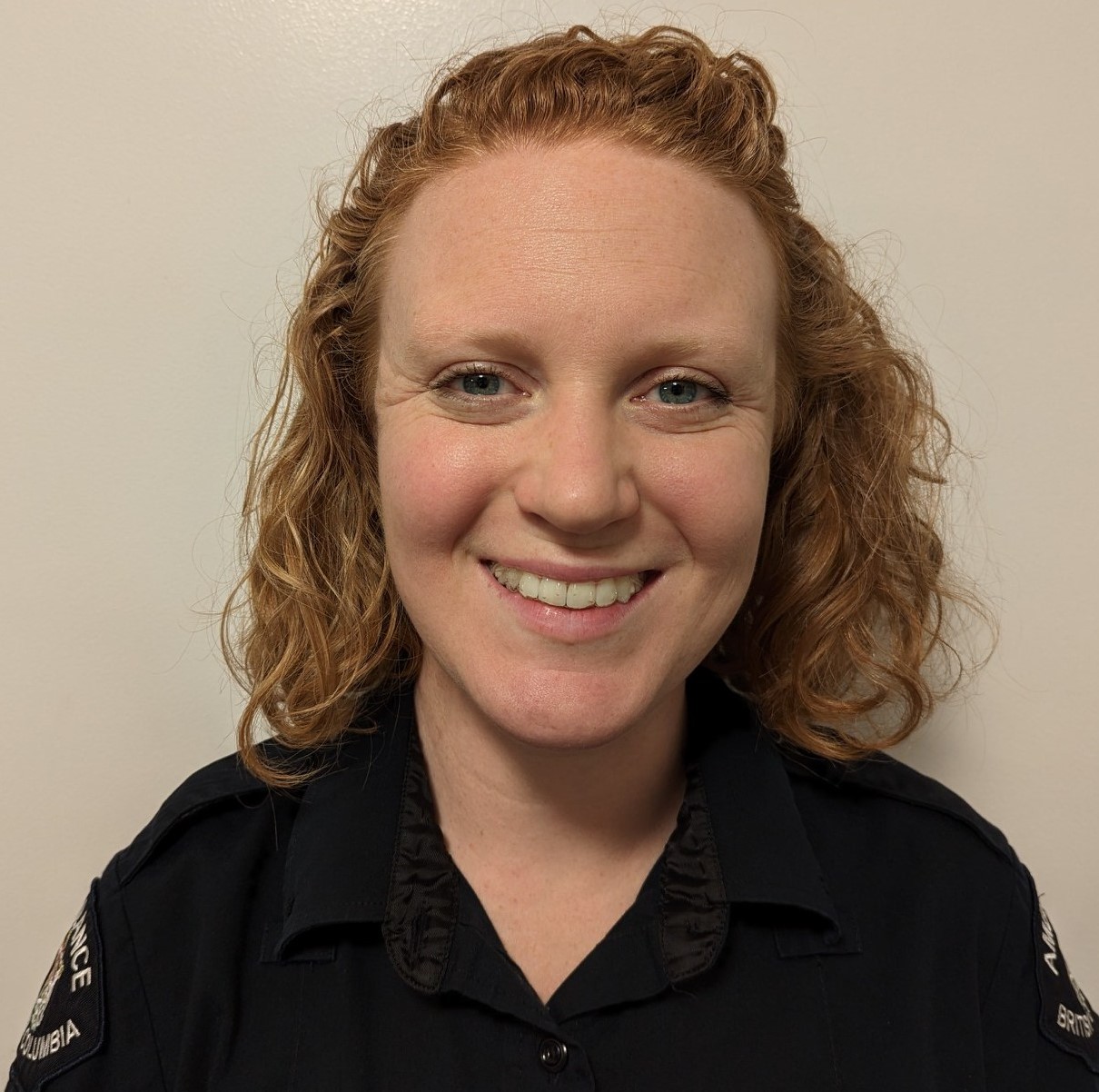 With her instructor Jessica Okeley supervising, Emily coached the patient’s mother on what to do to ensure the safe delivery of her grandchild. Emily also provided instructions on how to tie the umbilical cord.
With her instructor Jessica Okeley supervising, Emily coached the patient’s mother on what to do to ensure the safe delivery of her grandchild. Emily also provided instructions on how to tie the umbilical cord.
“She (Emily) was very nice, and she did a good job of explaining everything,” recalls the baby’s mother, Jessica.
“You could hear her voice while the baby was being born. It helped a lot, and it made it not as overwhelming as it would have been if we hadn’t had anyone to talk to.”
“I was actually okay. I think I was the calmest one.” Jessica adds that her husband and her mother-in-law were also there to assist with the birth of her daughter, the family’s second child.
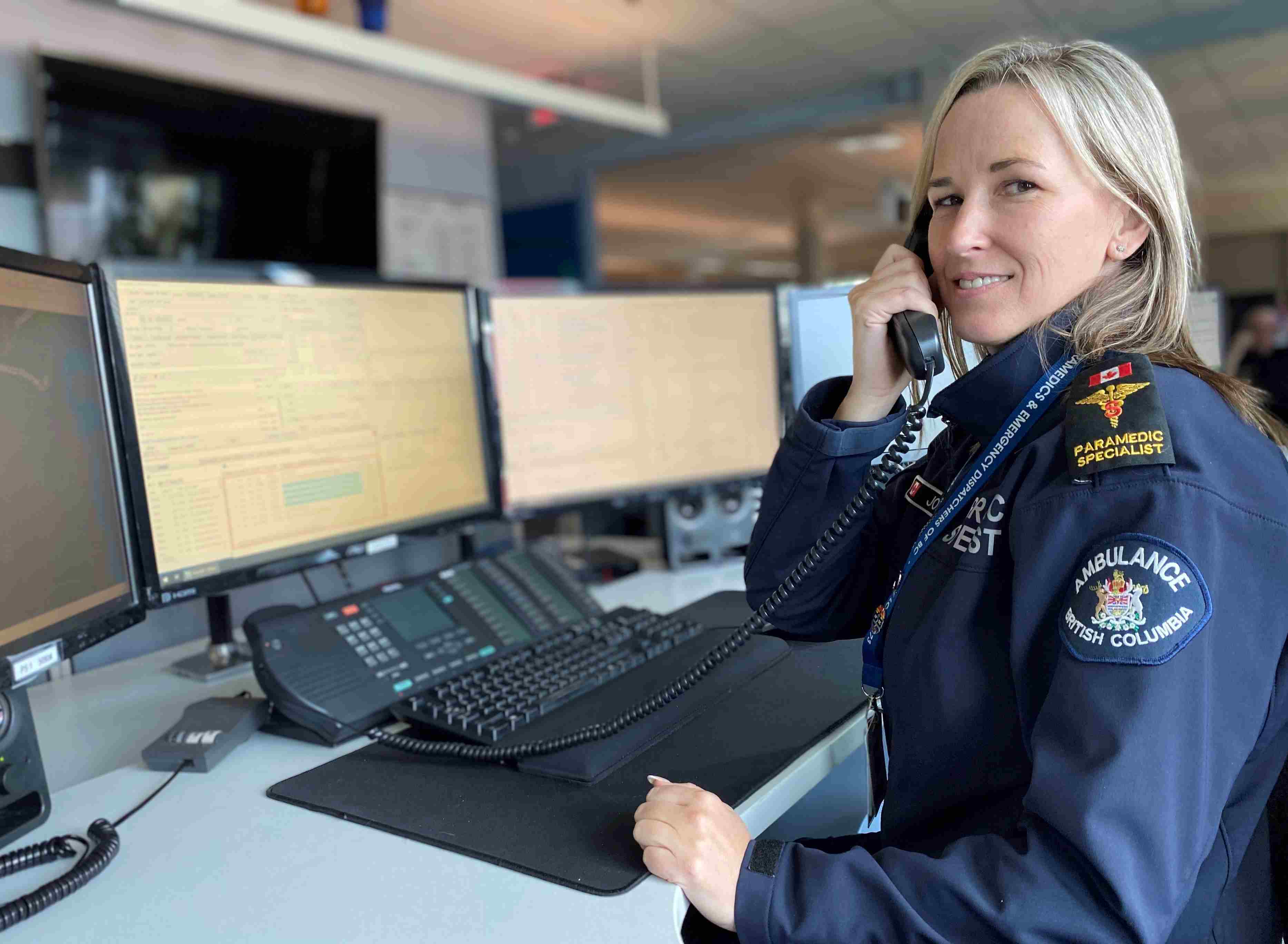 Knowing that an ambulance was more than an hour’s drive from Fort St. John, Emily brought Jodi Bender, a Paramedic Specialist in the Vancouver Dispatch Operations Centre, on the call to provide clinical assistance.
Knowing that an ambulance was more than an hour’s drive from Fort St. John, Emily brought Jodi Bender, a Paramedic Specialist in the Vancouver Dispatch Operations Centre, on the call to provide clinical assistance.
Over the phone, Jodi went through the assessment of the newborn and provided instructions on the delivery of the placenta and cutting of the umbilical cord.
Meantime, Secondary Triage Clinician Max Bibby, also in Vancouver Dispatch, suggested setting up a video call using the new online tool, GoodSAM Instant.Help, to see and help support the newborn while the ambulance was enroute.
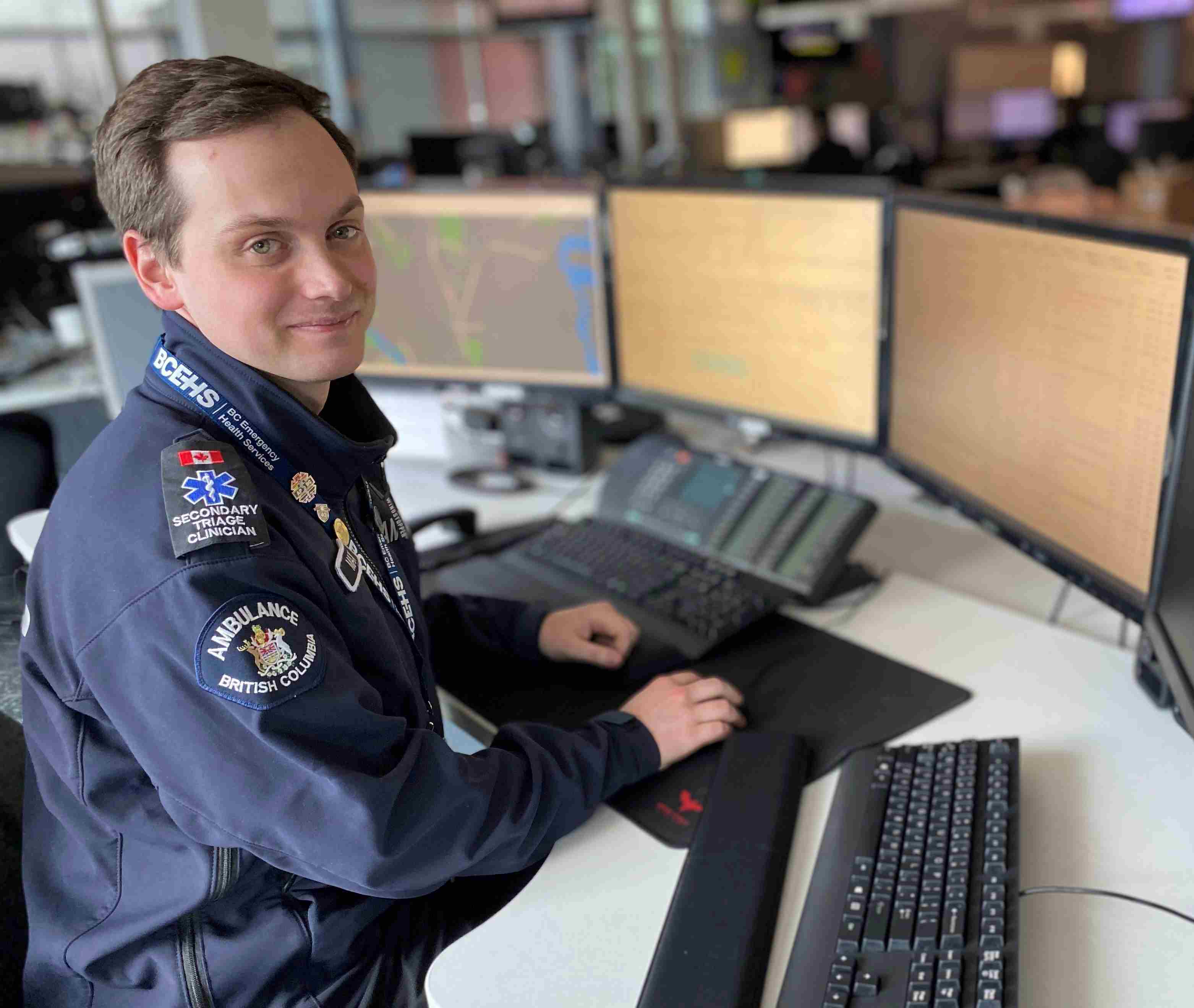 Max merged his phone call with Emily’s 9-1-1 call and advised the baby’s grandmother on how to connect her cell phone to the GoodSAM app so they could see how mom and baby were doing.
Max merged his phone call with Emily’s 9-1-1 call and advised the baby’s grandmother on how to connect her cell phone to the GoodSAM app so they could see how mom and baby were doing.
“Once connected, we could see mom and the baby’s colour, and get a basic set of vitals to see how fast the baby was breathing. We could see that they were doing really well and that there was skin to skin contact and minimal bleeding,” says Max.
“With newborns and babies, your assessment is done visually, so it was super helpful to see how the baby was doing. It’s actually amazing. It really adds a lot of context and a layer to the call that we can visually assess the newborn now instead of asking the question, we can actually see the presentation and offer clinical advice bases on what we see,” says Jodi.
In January 2022, BCEHS in partnership with the
PHSA Office of Virtual Health launched the GoodSAM tool as a pilot project to support paramedics on scene to connect patients with the right care, at the right time.
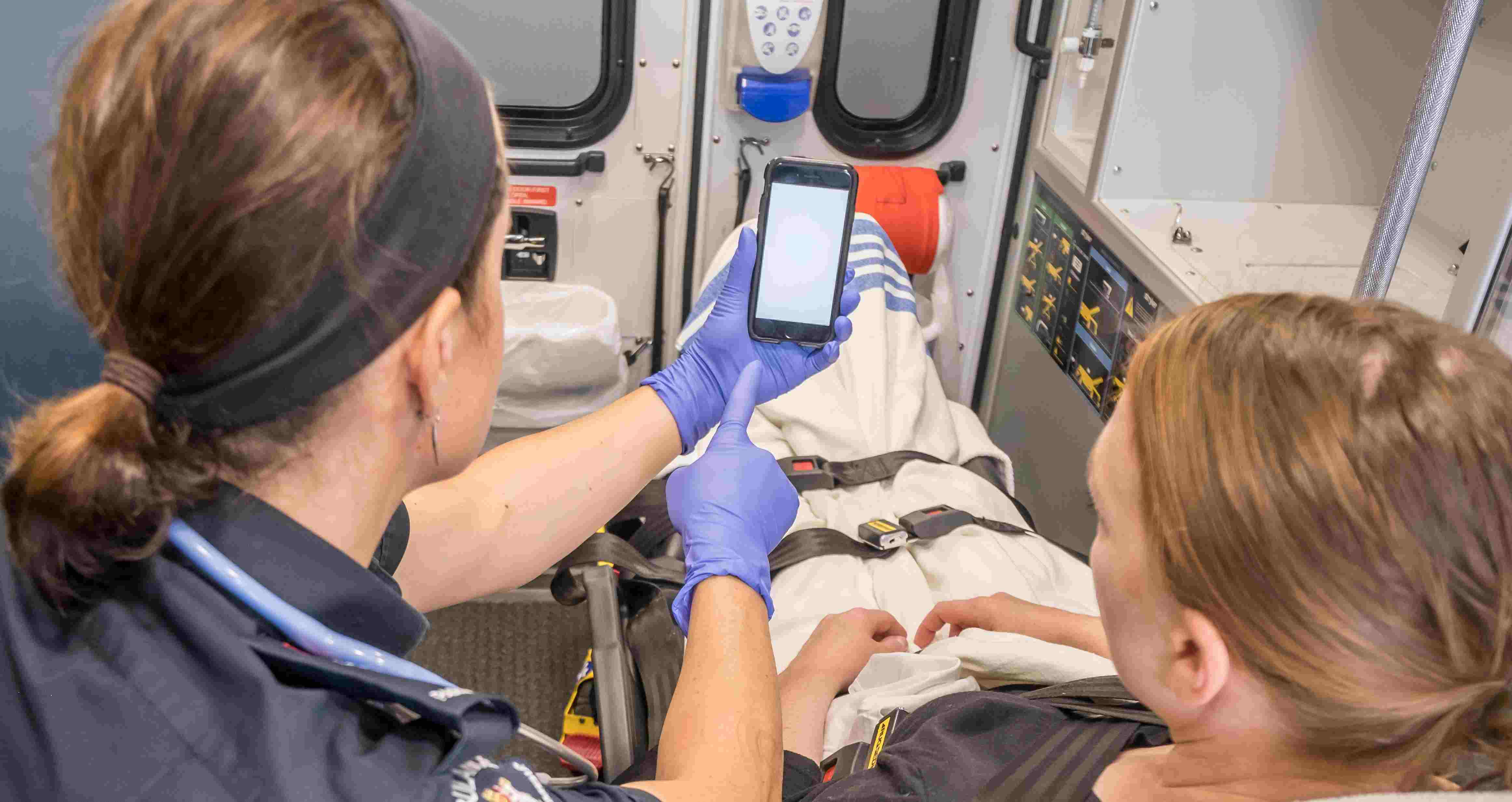 The Altona baby birth was the first time BCEHS, and any ambulance service in Canada, used the GoodSAM app in a labour and delivery pre-hospital transport scenario, says Max. Only two days later, the virtual tool was used again to assist with a baby’s delivery in the Port Hardy area.
The Altona baby birth was the first time BCEHS, and any ambulance service in Canada, used the GoodSAM app in a labour and delivery pre-hospital transport scenario, says Max. Only two days later, the virtual tool was used again to assist with a baby’s delivery in the Port Hardy area.
“For me the highlight was to see the reaction from mom and dad, to see there was so much support for them, and more importantly, that they could see us and see us in uniform. It helps reassure them in what can be a very vulnerable moment for individuals,” Max says.
“I just love that we were able to do that, especially when we were so far away that in a remote area, we were able to have face to face contact,” adds Jodi.
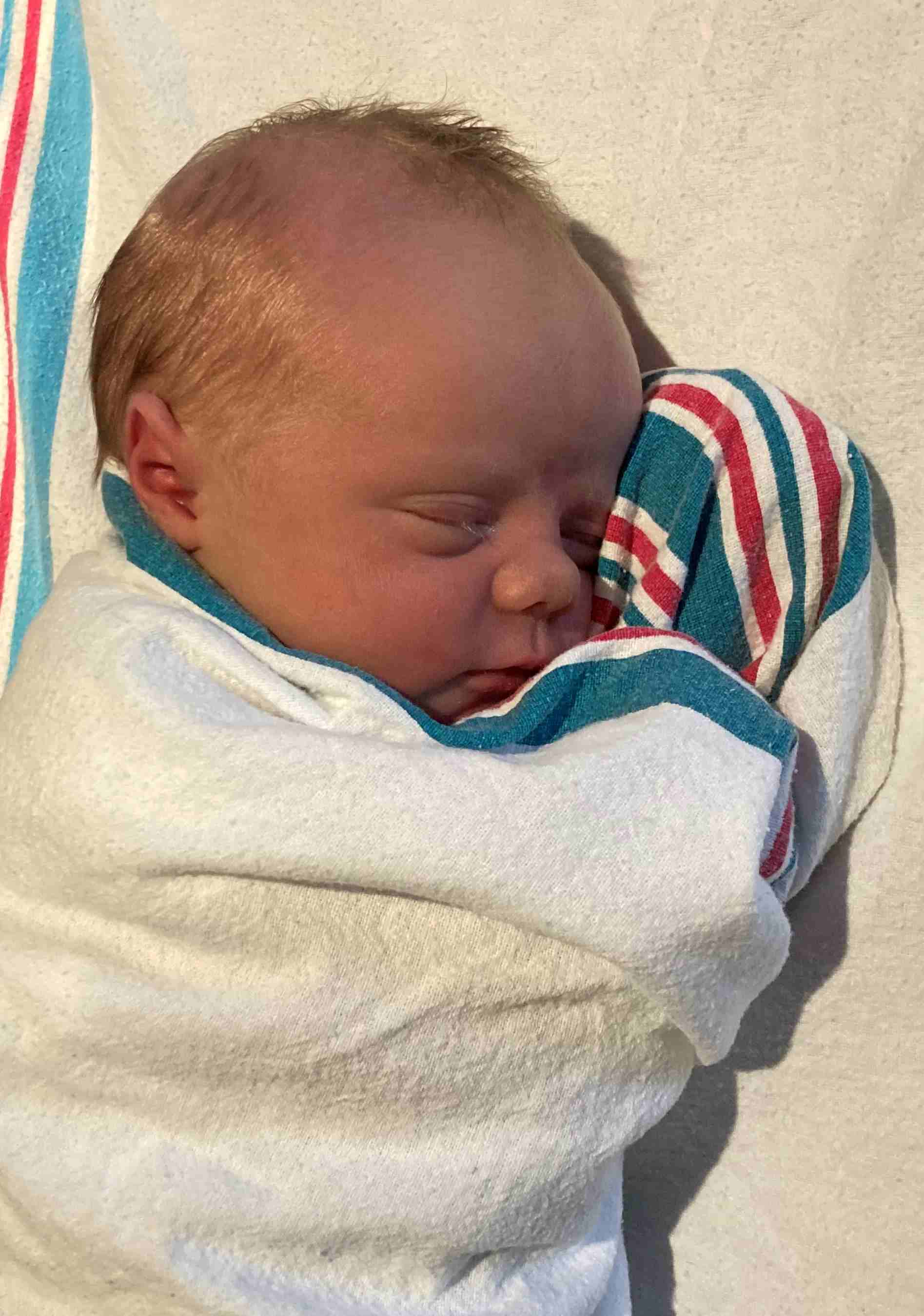 EMCT Emily stayed on the line with the family until paramedics arrived to care for and transport Jessica and her baby to hospital in Fort St. John. “They did an amazing job. They were remarkably calm. If I was delivering in a bedroom, I’d be yelling. Everybody was very calm and followed instructions and asked questions when appropriate,” she says.
EMCT Emily stayed on the line with the family until paramedics arrived to care for and transport Jessica and her baby to hospital in Fort St. John. “They did an amazing job. They were remarkably calm. If I was delivering in a bedroom, I’d be yelling. Everybody was very calm and followed instructions and asked questions when appropriate,” she says.
As for taking this call on her second day of training, Emily says, “It was crazy, but it was a lot of fun.”
BCEHS responds to an average of 1,450 pregnancy and childbirth-related calls each year. Last year, 53 stork pins were given out to BCEHS Emergency Medical Call-takers for helping with baby births. So far this year, 20 stork pins have been handed out to BCEHS Call-takers.

